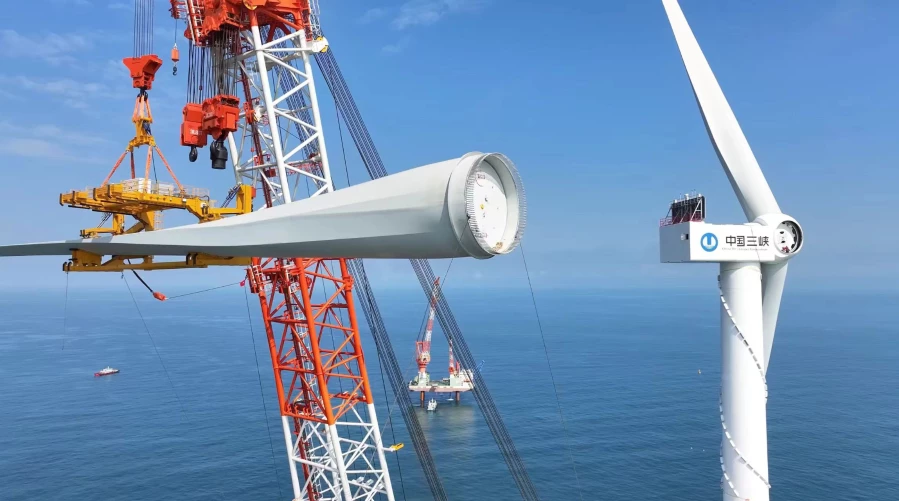Three Gorges Energy has connected the world's first 16-megawatt monster offshore wind turbine to the power grid. With a mind-boggling 260-meter (853-ft) rotor diameter, this towering colossus will supply clean energy for about 36,000 Chinese homes.
It doesn't look all that out of place, standing in a field of other, lesser goliaths, but this MingYang Smart Energy MySE 16-260 is the largest ever connected to the grid. The "engine room" and generator housed in the hub on top of its 152-m (500-ft) tower weigh in at a gargantuan 385 tons, and each of its three 123-m (404-ft) blades adds another 54 tons, hanging off one side of the generator shaft.
Every time it completes a full revolution, it sweeps about 50,000 sq m (540,000 sq ft) of air (that's seven-odd soccer fields in the internationally accepted layman's units), and sends up to 34.2 kWh of energy into the Chinese power system. Annually, it's expected to contribute about 66 gigawatt-hours.
This demonstration unit sits in the Fujian offshore wind farm in the Taiwan Strait, where it'll take advantage of a natural wind tunnel effect. According to the Three Gorges Group, this location experiences level 7 "near gale" conditions with winds exceeding 32 mph (51 km/h) more than 200 days each year.

Indeed, the area is prone to typhoons, so this enormous turbine has an opportunity to prove its mettle against the elements. It's designed to withstand winds up to 179 mph (287 km/h) – that leaves a margin over the most violent conditions ever measured in the Western North Pacific: Typhoon Tip, which featured sustained winds of 160 mph (260 km/h) in 1979. Mind you, the way weather systems are flying off kilter as climate change continues to advance, it's hard to know what to expect going forward.
Offshore wind turbines will continue to grow in size; the China State Shipbuilding Corporation was already building an 18-megawatt turbine back in January and it seems reasonable to expect a 20-MW announcement any day now.

The area of a circle being pi times the square of the radius, every meter added to the length of a turbine's blades has an outsized effect on the swept area from which energy can be harvested, so bigger is definitely better.
The engineering and logistics involved in manufacturing and deploying these things are thus getting wilder by the day, and both Mingyang and the Three Gorges Group have earned themselves a beer by getting this monster completed and into service.
Source: Three Gorges Corporation via Xinhua









